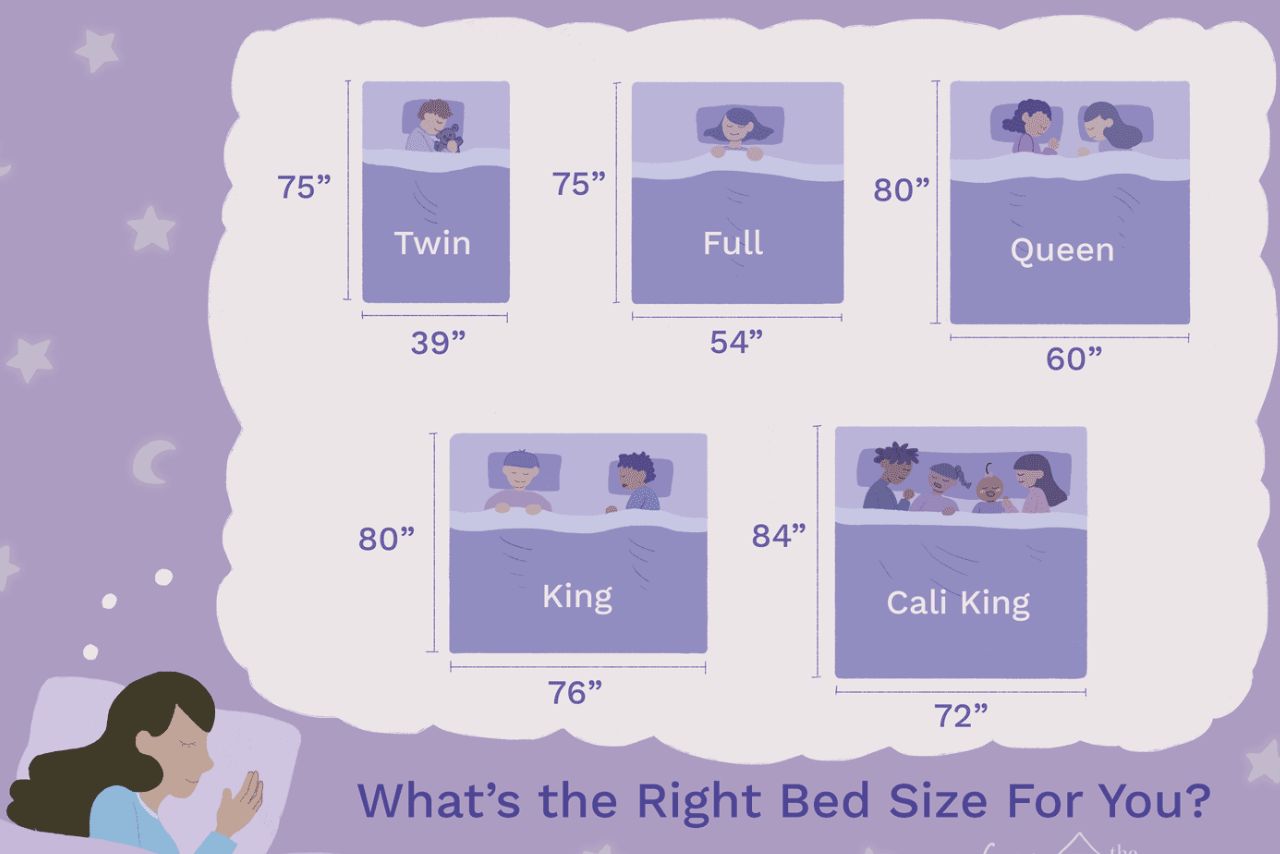Twin Bed Vs Double Bed: Understanding the Difference!

Twin Bed Vs Double Bed Difference Between Twin and Double Bed:
A twin bed is designed for a single sleeper and typically measures 38 inches wide by 75 inches long. A double bed (also known as a full bed) is slightly larger at 54 inches wide by 75 inches long, providing more space for either a single sleeper who prefers more room or for a cozy sleeping arrangement for two.
Are you confused about the difference between a twin bed and a double bed? Well, look no further!
In this article, we’ll break down the dissimilarities between these two popular bed sizes.
Whether you’re furnishing a small bedroom or considering options for guest accommodations, understanding the variations will help you make an informed decision.
So, let’s dive in!
In this article on twin beds vs double beds, we’ll discuss various factors such as size considerations, sleeping arrangements for guests or children versus adults’ preferences.
We’ll compare their pros and cons to help you determine which type would be ideal for different scenarios.
Get ready to unlock valuable insights into these two popular bedding choices!
What is a Twin Bed?
A twin bed, also known as a single bed, is a popular choice for individuals who sleep alone or children’s bedrooms.
It is designed to accommodate one person comfortably and offers an ideal solution for smaller spaces.
Here are some key points about twin beds:
- Standard Size: A standard twin bed typically measures 38 inches wide and 75 inches long. However, there are variations in length, with some models being slightly longer (80 inches) to cater to taller individuals.
- Space Efficiency: Due to its compact size, a twin bed is perfect for rooms with limited space such as dormitories or small apartments. It allows you to maximize the available area without compromising on comfort.
- Versatility: Twin beds can be used in various settings besides bedrooms. They work well in guest rooms, children’s rooms, daybeds, bunk beds, trundle beds, and even in shared hotel rooms where two separate sleeping areas are required.
- Affordability: Compared to larger-sized mattresses like queen or king beds, twin mattresses tend to be more affordable due to their smaller dimensions.
- Ease of Maintenance: Since twin beds have a single mattress and base structure that supports just one person’s weight at a time, they are relatively easier to maintain compared to bigger options that require flipping or rotating heavy mattresses regularly.
- Availability of Accessories: There is no shortage of bedding accessories compatible with twin beds – from sheets and comforters specifically designed for this size to decorative pillows and mattress protectors tailored for optimal fitment.
So,
Twin beds offer practicality and versatility while catering perfectly for individual sleepers or those confined by limited space requirements.
With their standardized measurements and vast accessory options available on the market today it’s no wonder why these cozy little wonders remain widely popular among consumers worldwide.
What is a Double Bed?
A double bed, also known as a full-size bed, is larger than a twin bed but smaller than a queen or king-sized bed.
It provides ample space for one person and can comfortably accommodate two adults.
Here are some key points to understand about double beds:
- Size: A standard double bed typically measures 54 inches in width and 75 inches in length. This makes it 15 inches wider than a twin bed. Keep in mind that there may be variations in size based on different regions or manufacturers.
- Sleeping Capacity: A double bed is designed to sleep two people comfortably, although it may feel slightly cramped compared to larger sizes such as queen or king beds. If you prefer extra space while sleeping, you might consider opting for a larger size.
- Versatility: Due to its moderate size, a double bed can fit well within most bedrooms without overwhelming the available space. It’s suitable for teenagers’ rooms, guest rooms, smaller master bedrooms, or apartments where space is limited.
- Bedding Accessories: When choosing bedding accessories like sheets and comforters for your double mattress, make sure they are specifically made for this size to ensure proper fit and coverage.
- Cost-Effective Option: Double beds tend to be more affordable compared to larger sizes like queen or king beds since they require less material and construction cost.
- Ideal For Single Adults: If you’re an individual who prefers spaciousness while sleeping alone without feeling too confined by excess roominess of larger beds, then a double bed could be an ideal choice for you.
In summary, a double (full-size) bed offers more sleeping area compared to a twin-sized counterpart but still remains relatively compact when considering other options like queens or kings.
This versatility makes them suitable for various living situations, and their affordability adds further appeal.
Interested buyers should consider personal preferences, sleeping arrangements, and available space when deciding whether a double bed is the right choice.
Twin Bed Vs Double Bed:
Twin Bed and a Double Bed difference:
| Aspect | Twin Bed | Double Bed (Full Bed) |
|---|---|---|
| Width | 38 inches (96.5 cm) | 54 inches (137 cm) |
| Length | 75 inches (190.5 cm) | 75 inches (190.5 cm) |
| Sleepers | Designed for one person | Can accommodate one or two people |
| Space | Ideal for smaller rooms | Provides more sleeping space |
| Versatility | Suitable for kids, teenagers, or single adults | Offers extra space for single sleepers or cozy sleeping for two |
| Couples | Not recommended for couples | Can work for couples with limited space |
| Guest Rooms | Common choice for guest rooms | Can provide more comfort for guest accommodations |
Remember that mattress dimensions can vary slightly between manufacturers, so it’s always a good idea to check specific product details.
Size and Dimensions:
When it comes to the size and dimensions of twin beds and double beds, there are some key differences to consider.
Here’s a breakdown:
- Twin Bed
- Also known as a single bed.
- Typically measures 38 inches wide by 75 inches long (38″ x 75″).
- Ideal for children or single adults who don’t require much space.
- Double Bed
- Also referred to as a full-size bed.
- Usually measures 54 inches wide by 75 inches long (54″ x 75″).
- Offers more width compared to a twin bed, providing additional sleeping space for one person or coziness for couples.
Here’s a side-by-side comparison of the size and dimensions:
| Aspect | Twin Bed | Double Bed |
|---|---|---|
| Width | 38 inches | 54 inches |
| Length | 75 inches | 75 inches |
| Suitable For | Children, Single Adults | Individuals, Couples |
It is important to note that these measurements may vary slightly depending on the manufacturer or country-specific standards.
Always refer to specific product listings or consult with retailers when looking for precise measurements.
Consider your personal needs and available space when deciding between a twin bed or double bed.
While a twin bed offers compactness and affordability, a double bed provides increased comfort if you have enough room in your bedroom.
Next up: we’ll compare the materials used in constructing twin beds versus double beds. Stay tuned!
Sleeping Capacity:
When it comes to sleeping capacity, there are notable differences between twin beds and double beds.
Here’s a breakdown of the key points:
- Twin Bed:
- Also known as a single bed, a twin bed is designed for one person.
- It typically measures 38 inches wide by 75 inches long (96.5 cm x 190.5 cm), providing enough space for one adult or child.
- Twin XL beds are also available, which offer additional length (80 inches/203 cm) while maintaining the same width.
- Double Bed:
- A double bed, also called a full-size bed, is larger than a twin but smaller than a queen or king.
- It usually measures around 54 inches wide by 75 inches long (137 cm x 190.5 cm).
- Double beds can comfortably accommodate two average-sized adults but may feel cramped for those who prefer more personal space during sleep.
- Sleeping Arrangements:
| Bed Size | Ideal For |
|---|---|
| Twin | Solo sleepers such as children or teenagers |
| Twin XL | Taller individuals who need extra legroom |
| Double | Couples with limited space availability or guest bedrooms |
It’s important to note that the above dimensions and recommendations can vary across different regions and manufacturers; therefore, it’s always wise to check specific measurements before making any purchase decisions.
Considering your specific needs in terms of sleeping arrangements will help you determine whether a twin bed or double bed suits your requirements best.
Whether you prioritize individual comfort or accommodation for two people will guide you towards choosing the right size for your bedroom setup
Comfort and Space:
When it comes to comfort and space, there are some key differences between twin beds and double beds.
Let’s take a closer look:
- Size: The most obvious difference is the size of the two bed types.
- Twin beds: Also known as single beds, twin beds typically measure 38 inches wide by 75 inches long. They provide enough space for one person to sleep comfortably.
- Double beds: On the other hand, double beds are larger than twin beds. They usually measure 54 inches wide by 75 inches long, offering more sleeping area.
- Sleeping capacity: Since twin and double beds differ in size, they also vary in terms of sleeping capacity.
- Twin beds: Designed for one person, twin beds are perfect for children’s bedrooms or guest rooms where only one occupant is expected.
- Double beds: With their larger dimensions, double beds can accommodate two people comfortably. This makes them a popular choice for couples or individuals who prefer extra space while sleeping.
- Room size consideration: Another factor to consider when choosing between a twin bed and a double bed is the available room space.
- Twin Beds: Due to their compact size, twin beds work well in smaller rooms or shared spaces such as dormitories or studio apartments with limited floor area.
- Double Beds: As they require more room space compared to twin bed.
Choosing the Right Option for You:
When it comes to choosing between a twin bed and a double bed, there are a few factors you should consider.
Here’s a breakdown of things to keep in mind:
- Available Space: Measure your room before making a decision. A twin bed is ideal for smaller spaces like dorm rooms or children’s bedrooms, while a double bed requires more space.
- Sleeping Arrangements: Consider who will be using the bed. If you’re single or have limited sleeping needs, a twin bed should suffice. However, if you often have guests staying over or share the bed with your partner, a double bed might be more suitable.
- Comfort: Double beds provide more sleeping area compared to twin beds which can be beneficial if you prefer extra room while sleeping.
- Cost: Generally speaking, twin beds tend to be cheaper than double beds due to their smaller size and lower material requirements.
- Bedding and Accessories: Keep in mind that bedding options may vary between twin and double sizes. Make sure the specific mattress size you choose has an ample selection of sheets, blankets, and other accessories available on the market.
To summarize, here are some key takeaways:
- Twin beds are great for small spaces or individual sleepers.
- Double beds offer more space but require larger rooms.
- Consider your specific needs regarding comfort and sleeping arrangements.
- Factor in cost considerations as well as availability of bedding options.
By considering these points carefully, you’ll be able to make an informed decision about whether a twin or double-sized bed is right for you!
Maintenance and Durability:
When it comes to maintenance and durability, there are some key differences between twin beds and double beds.
Here’s a breakdown:
- Size: Twin beds are generally smaller in size compared to double beds, which can impact their durability. Smaller mattresses may experience less wear and tear over time.
- Mattress Support: Double beds usually come with a center support beam or additional slats for added stability and mattress support. This extra reinforcement enhances the bed’s durability, especially when accommodating two individuals.
- Weight Distribution: The weight distribution on a double bed is typically more evenly distributed due to the larger surface area of the mattress. This balanced weight distribution helps prevent excessive strain on specific areas of the bed, increasing its longevity.
- Frame Construction: Double beds often have sturdier frame construction compared to twin beds as they need to support more weight. Robust materials like solid wood or metal frames are commonly used for double beds, ensuring long-lasting durability.
- Maintenance Requirements: Both twin and double beds require regular maintenance to keep them in good condition, but certain aspects may differ:
- Cleaning: Regardless of size, both types of bed require periodic cleaning such as vacuuming or spot cleaning.
- Turning Mattresses: Double mattresses might need occasional flipping or rotating to distribute wear evenly since they tend to be heavier than twin mattresses.
- Checking Frame Stability: It’s important for both types of bed frames (twin or double) to be periodically inspected for any loose screws or joints that could affect stability.
So, while both twin and double beds require maintenance efforts such as cleaning and checking frame stability regularly, the sturdier construction options available for double beds make them generally more durable over time due to better mattress support systems and reinforced frame structures
Conclusion: Twin Bed Vs Double Bed
In conclusion, the choice between a twin bed and a double bed depends on the intended use and personal preferences.
A twin bed is suitable for individual sleepers or smaller spaces, while a double bed offers a bit more width and can accommodate either a single sleeper desiring extra space or a snug sleeping arrangement for two people.
Consider the space available and your sleeping needs when making your decision.
To summarize, understanding the differences between twin beds and double beds empowers consumers to make well-informed choices regarding their sleeping arrangements.
By considering factors like size, room requirements, and individual preferences, individuals can select the optimal type of bed that suits their needs perfectly.







